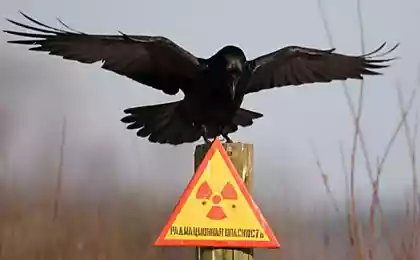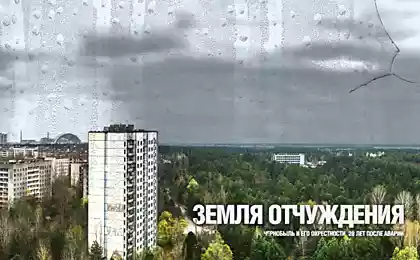754
Hidden video cameras filmed the abundance of animal life in the Chernobyl zone
In the 30 years since the Chernobyl exclusion zone around the plant has become a natural nature reserve. As it turned out, for many wild animals is not so terrible radiation, as a man. In the absence of the most feared predator almost all kinds of animals have increased their numbers.

A pack of wolves in the Chernobyl zone; camera motion sensor activated
On the abundance of natural life in the Chernobyl zone, scientists said before, but still draw conclusions on the basis of counting the number of tracks. Now biologists for the first time in the history of large-scale experiment conducted with a hidden Photographing in the Chernobyl zone.
Experts from the University of Georgia have installed 30 cameras in the territory of the Polesie State Radiation Ecological Reserve, which covers an area of 2162 km2 in the territory of Belarus. The study lasted for five weeks: the camera work in 94 locations around the reserve, each of them seven days
.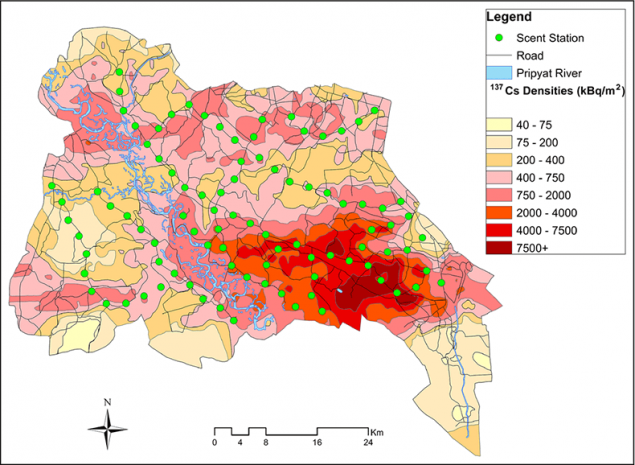
Hidden station located on a tree or bush and grease that attract animals by smell. The distance between the cameras was more than 3 km to the same instance did not get into the lens of the two chambers during the day.
Scientists have documented all of the animals that appeared before the cameras, the frequency of their visits. The study is published April 18, 2016 in the journal Frontiers in Ecology and the Environment.
Over time the camera recorded 14 different animals. The films were noted at the bottom of the marten, bison, badgers and wild boar.
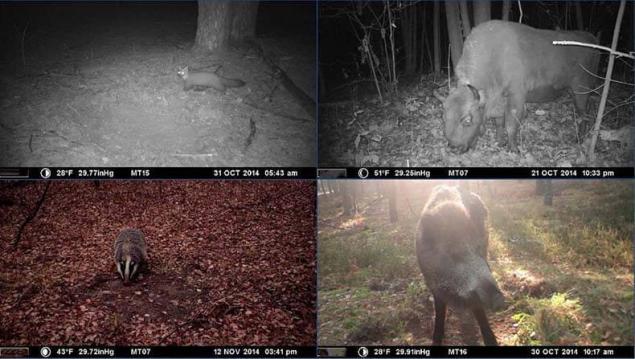
More often than not in front of cameras appeared wolves, wild boars, foxes and raccoon dogs. All of these species are found, including near the most contaminated areas in Chernobyl zone.
The experiment confirmed earlier assumptions about the wide variety of species in the Chernobyl zone, as well as the fact that the level of radiation is not reflected in the distribution of animals.

In the absence of human animals really feel great, and the radiation they hardly interfere. Biologists say that under irradiation in 10-35 times higher than normal animals live shorter lives and leave fewer offspring, but it is not as dangerous for them as human presence. An illustrative experiment was 90th when the zone brought a handful of endangered Przewalski's horses. They not only survived, but also bred to the wild.
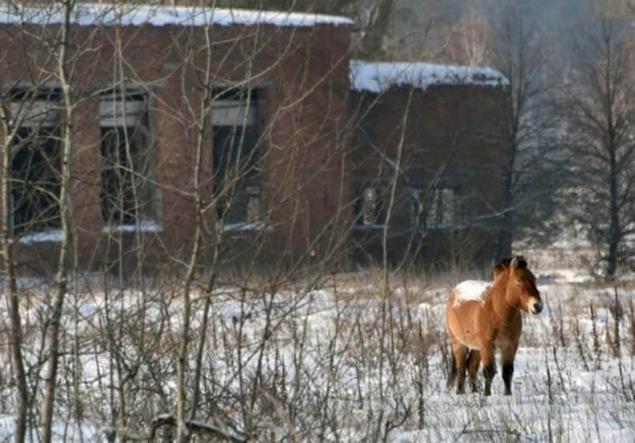
Przewalski's Horse in the Chernobyl zone
"There is a huge difference between the Chernobyl accident and to Chernobyl 30 years later - he said the biologist Denis Vishnevsky working in Chernobyl reserve. - These animals are probably the only positive result of the terrible catastrophe, which we took. "

A pack of wolves in the Chernobyl zone; camera motion sensor activated
On the abundance of natural life in the Chernobyl zone, scientists said before, but still draw conclusions on the basis of counting the number of tracks. Now biologists for the first time in the history of large-scale experiment conducted with a hidden Photographing in the Chernobyl zone.
Experts from the University of Georgia have installed 30 cameras in the territory of the Polesie State Radiation Ecological Reserve, which covers an area of 2162 km2 in the territory of Belarus. The study lasted for five weeks: the camera work in 94 locations around the reserve, each of them seven days
.

Hidden station located on a tree or bush and grease that attract animals by smell. The distance between the cameras was more than 3 km to the same instance did not get into the lens of the two chambers during the day.
Scientists have documented all of the animals that appeared before the cameras, the frequency of their visits. The study is published April 18, 2016 in the journal Frontiers in Ecology and the Environment.
Over time the camera recorded 14 different animals. The films were noted at the bottom of the marten, bison, badgers and wild boar.

More often than not in front of cameras appeared wolves, wild boars, foxes and raccoon dogs. All of these species are found, including near the most contaminated areas in Chernobyl zone.
The experiment confirmed earlier assumptions about the wide variety of species in the Chernobyl zone, as well as the fact that the level of radiation is not reflected in the distribution of animals.

In the absence of human animals really feel great, and the radiation they hardly interfere. Biologists say that under irradiation in 10-35 times higher than normal animals live shorter lives and leave fewer offspring, but it is not as dangerous for them as human presence. An illustrative experiment was 90th when the zone brought a handful of endangered Przewalski's horses. They not only survived, but also bred to the wild.

Przewalski's Horse in the Chernobyl zone
"There is a huge difference between the Chernobyl accident and to Chernobyl 30 years later - he said the biologist Denis Vishnevsky working in Chernobyl reserve. - These animals are probably the only positive result of the terrible catastrophe, which we took. "
